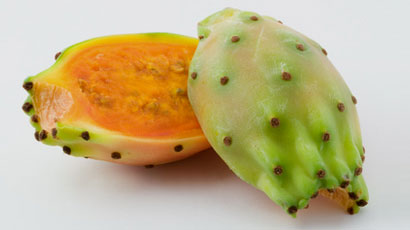Health Benefits of the Prickly Pear Cactus

The prickly pear cactus, also known as the paddle cactus or the cactus pear, is a type of edible cactus mainly found in arid and semi-arid regions such as Latin America, the Middle East, North Africa, the Mediterranean region and Mexico. Popular for its sweet fruit, prickly pear cactus is used to make syrups, jams and juices. The leaves are also eaten as part of vegetable dishes. Prickly pear cactus is known for its health benefits.
Health Benefits
- Weight Management: The fruit is rich in fiber and water, and almost fat-free. This makes it ideal for those managing their weight. It keeps you feeling full for a longer period of time while still supplying your body with essential vitamins and minerals. As part of holistic medicine for weight loss, prickly pear lollipops are recommended for obese people.
- Better Digestion: Fiber-rich foods like prickly pear helps to prevent constipation and hemorrhoids. It may also reduce the risk of diverticular disease which affects the intestinal lining.
- Heart Health: The prickly pear contains magnesium and potassium which stabilizes blood pressure and protects heart function. Antioxidant components present in the fruit may also help to control cholesterol levels.
- Protection Against Disease: Rich in vitamin C, the prickly pear fruit supplies antioxidants to the body which help to protect against diseases, including certain types of cancer.
- Improved Eye, Skin Bone and Hair Health: Foods rich in vitamin A are beneficial for the eyes, skin and bones. Vitamin A also helps to strengthen the connective tissues in the body. Traditional cultures use the pulp and juice of the prickly pear cactus to treat skin wounds. A medium-sized prickly pear supplies about 6 percent of the daily calcium requirement. Calcium helps to strengthen the bones and teeth and prevents diseases such as osteoporosis. The sap from the cactus may be used a hair conditioner.
- Prickly pear extract may be used to treat conditions such as colitis, prostate gland enlargement and Type 2 diabetes.
- The extract is sometimes recommended as a remedy for alcohol hangovers.
- In Mexican folk medicine, the cactus pads are heated and used as a remedy for rheumatism.
Nutritional Value
Doctors maintain that prickly pear cactus may serve as a beneficial supplement to a nutritious diet due to its content of antioxidants, carotenoids, minerals, linoleic acid and fiber. Almost the entire cactus is edible, including the leaves and stems.
Side Effects
It is advisable to incorporate prickly pear cactus into your diet gradually, as a few unpleasant side effects may occur in some people. The plant and the supplements may lead to abdominal fullness, nausea and mild diarrhea. These can be avoided by easing the plant into your diet over a period of time.
Availability
The cactus may be found in supermarkets and stores in the form of jams, jellies, fruits, leaves and syrups. You are most likely to find these in places that store multi-cultural ingredients. Prickly pear supplements are available in the form of oils or extracts.
You can even buy the fruits and extract the juice on your own. To do this, peel the skin off and blend the fruit in a food processor until liquefied. Pass through a sieve and store the juice in a bowl or jar. Discard the seeds and pulp. You can get one cup of juice from about 6 to 12 fruits, depending on their size. Drink the juice as it is, or flavor with some fresh lemon.
If you would like to pick the cactus on your own, make sure to protect your hands against the spines and bristles by wearing heavy gloves and using a long handled fork.